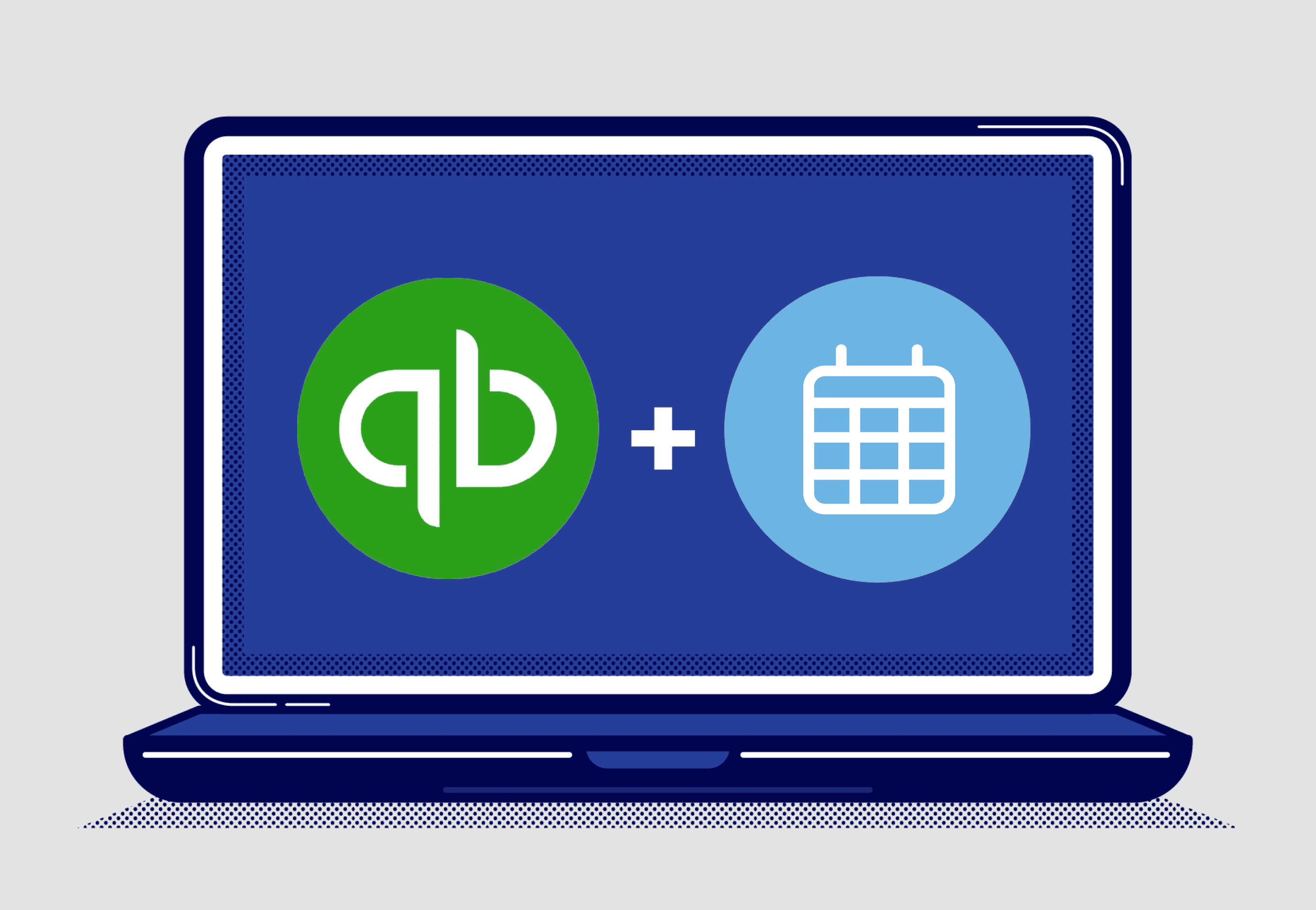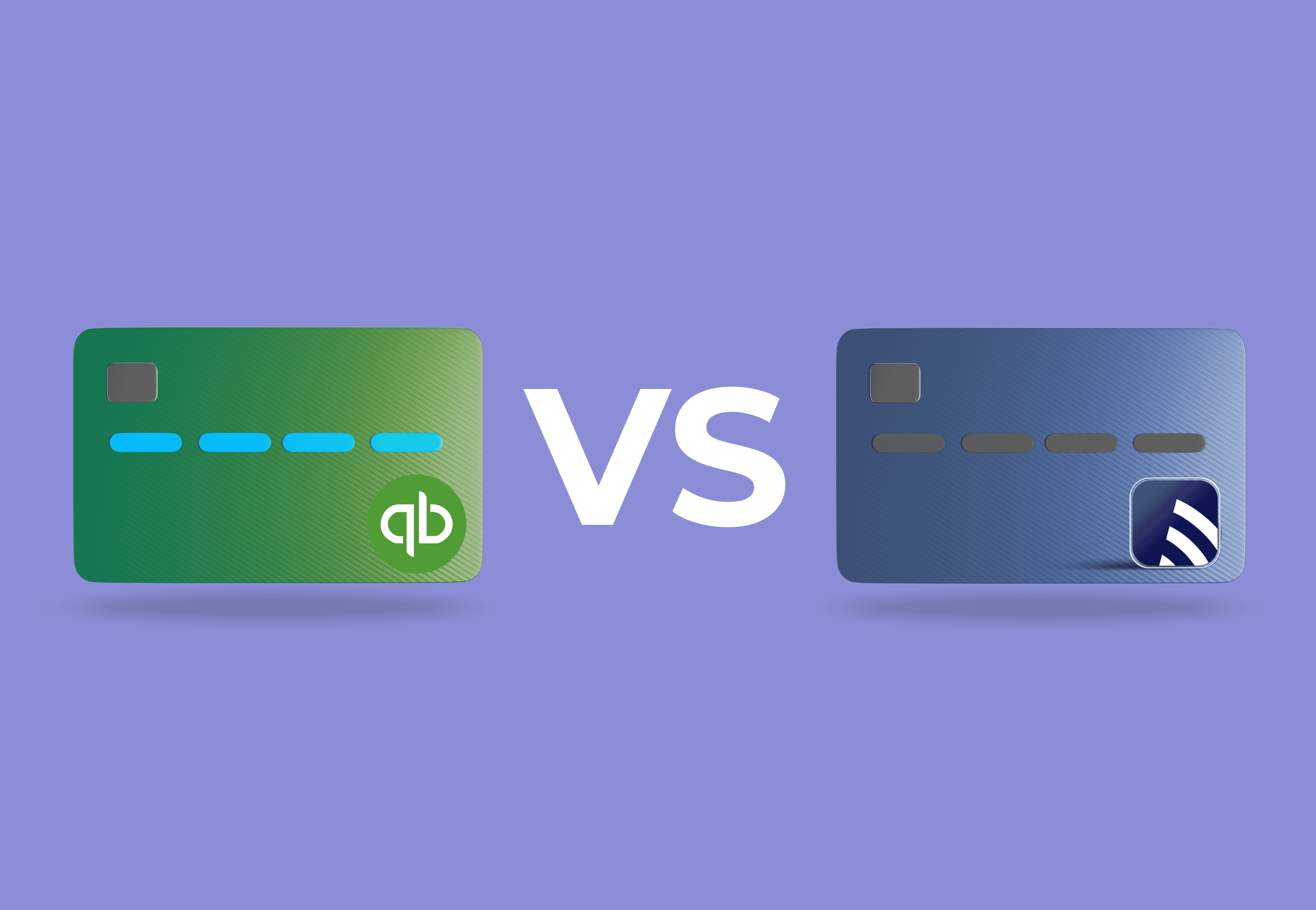Plumbing Businesses Owner Salaries, Profits, and Revenue: A 2025 Guide
Discover 2025 plumbing owner salaries, profits, and revenue trends. Learn how to build a profitable plumbing business with FieldPulse’s FSM software.
Jul 15, 2025

Plumbing businesses continue to thrive in 2025, creating opportunities for owners to increase plumbing business profit. According to studies conducted by IBISWorld , the plumbing industry in the United States is estimated to generate $169.8 billion in total revenue this year.
As the industry continues to experience an increase in demand, there is a huge opportunity for plumbers and business owners to grow and build profitable plumbing businesses.
Whether you are looking to start your own plumbing business, a master plumber exploring the states with the highest paying salaries, or a current business owner seeking to increase profits, this blog will cover everything you need to know to earn more and build a successful plumbing business in 2025.
Where Do Plumbers Earn the Most? Top Cities and States in 2025
In 2025, the average salary for plumbers in the United States ranges between $33,958 and $93,066. This wide range is due to many factors, including population, supply and demand, cost of living, and geographical location.
Let’s start by looking at the cities and states with the highest average salaries for plumbers, so whether you are a plumbing company owner or an employee, you can determine which markets offer the greatest opportunities for higher earnings and success. The metropolitan areas with the highest paying plumbing salaries in 2025 are:
- San Jose, California $99,570
- New York, New York $93,650
- Chicago, Illinois $92,060
- San Francisco, California $90,790
- Boston, Massachusetts $90,580
All of these cities are heavily populated with a high cost of living, and this data demonstrates that plumbers in densely populated urban areas tend to earn higher salaries due to strong demand for plumbing services compared to those working in rural areas.
While certain metropolitan areas lead in average plumber income, it is also valuable to look at state-level data if you are a plumber looking to determine where you could earn a higher income. Let’s look at the top five states with the highest paying plumbing salaries:
- New Jersey, NJ $97,690
- Massachusetts, MA $89,140
- Illinois, IL $88,420
- Oregon, OR $85,680
- New York, NY $84,890
If you’re a plumbing professional in a different geographical area , don’t panic. While location can influence earning potential, there are tools to increase the profitability of your plumbing business regardless of where you operate.
What Determines a Plumbing Business Owner’s Salary?
When it comes to the salary of a plumbing business owner, there’s no one-size-fits-all answer. Earnings can vary widely depending on several factors, including the geographical location of the business, the number of employees on the payroll, the size and scale of operations, local taxes and regulations, and ongoing business expenses.
Plumbing business owners in urban areas with a large team and higher levels of demand may see significantly higher profits than one operating a smaller shop in a rural market. Understanding these variables is essential when looking at potential earnings across different regions in the United States.
About Creating a Profitable Plumbing Business
Creating a profitable business is definitely challenging, but not impossible. It starts with understanding that your business receives a profit if your revenues are higher than your expenses. It's not uncommon for service business owners to feel frustrated when trying to navigate advanced accounting topics, such as depreciation of supplies and equipment. However, nine times out of ten if you live by the golden rule of consistently spending less than what your company brings in, you'll see a profit.
Develop a Pricing Formula
Running a profitable businesses means you can't just say "let's see if this price works," or adjust pricing on the fly. Plumbing business owners must determine if they want to charge for time and materials or a flat rate, which means it's important to develop a solid pricing formula. Before developing a pricing formula, start by determining how much you must spend for expenses and remain competitive. Here's an example formula you can follow for pricing plumbing jobs:
- Base hourly rate: The formula for this starts with writing down how much you want to earn weekly and then dividing that number by the billable hours you plan to work.
- Billable hourly rate: Determine this by calculating your profit margin and overhead expenses and then adding that to your base hourly rate.
- Bidding: Compile the pricing for materials, permits, taxes, and any other expenses tied to the job.
- Labor hours: Write down your total labor hours and multiply that number by your base hourly rate.
- Total for the quote: Add the bidding total with your labor hours to receive the total for the quote.
Calculate Your Company's Profit Margin and Overhead
Calculating your company's overhead expenses means including costs for advertising, keeping the lights on, maintaining equipment, and more. Start by adding up these expenses, and then add a percentage – like 30%, for example – for your profit margin. So, if you want to earn $40 per hour, the formula looks like this:
- $40 x 30% = $12
Now, does that percentage cover your expenses and create a profit? If not, look at the formula again and add another 25%. So, you're adding the total from the formula above to your hourly rate. Then you're multiplying that total by 25%. The formulas look like this:
- $40 x 30% = $12
- $12 + $40 = $52
- $52 x 25% = $13
- $13 + $52 = $90
When it's all said and done, you'll charge $65 per hour to your client to ensure you have enough to cover overhead expenses while simultaneously generating profits.
How Revenue Plays a Role in Salary and Profits
Instead of thinking that it would be nice to make a profit someday, shift your mindset to managing your business for profitability. This is where learning how revenue plays a role in salary and profits comes in. Get started by:
- Determining the effectiveness of your marketing
- Focusing on the cost per acquisition and how it relates to your company's overall spend
- Tracking expenses to determine if they're growing or decreasing over time.
- Creating a budget and using it to hold you accountable
As you make changes to your business to prioritize budget goals, you can expect your team to notice this shift. For example, they might wonder why there are changes regarding expectations. Be sure to hold a team meeting to discuss your vision for the future, and ensure they understand this new focus. That vision should include positive changes for employees in addition to growing profits.
How Field Service Management Software Can Increase Profit
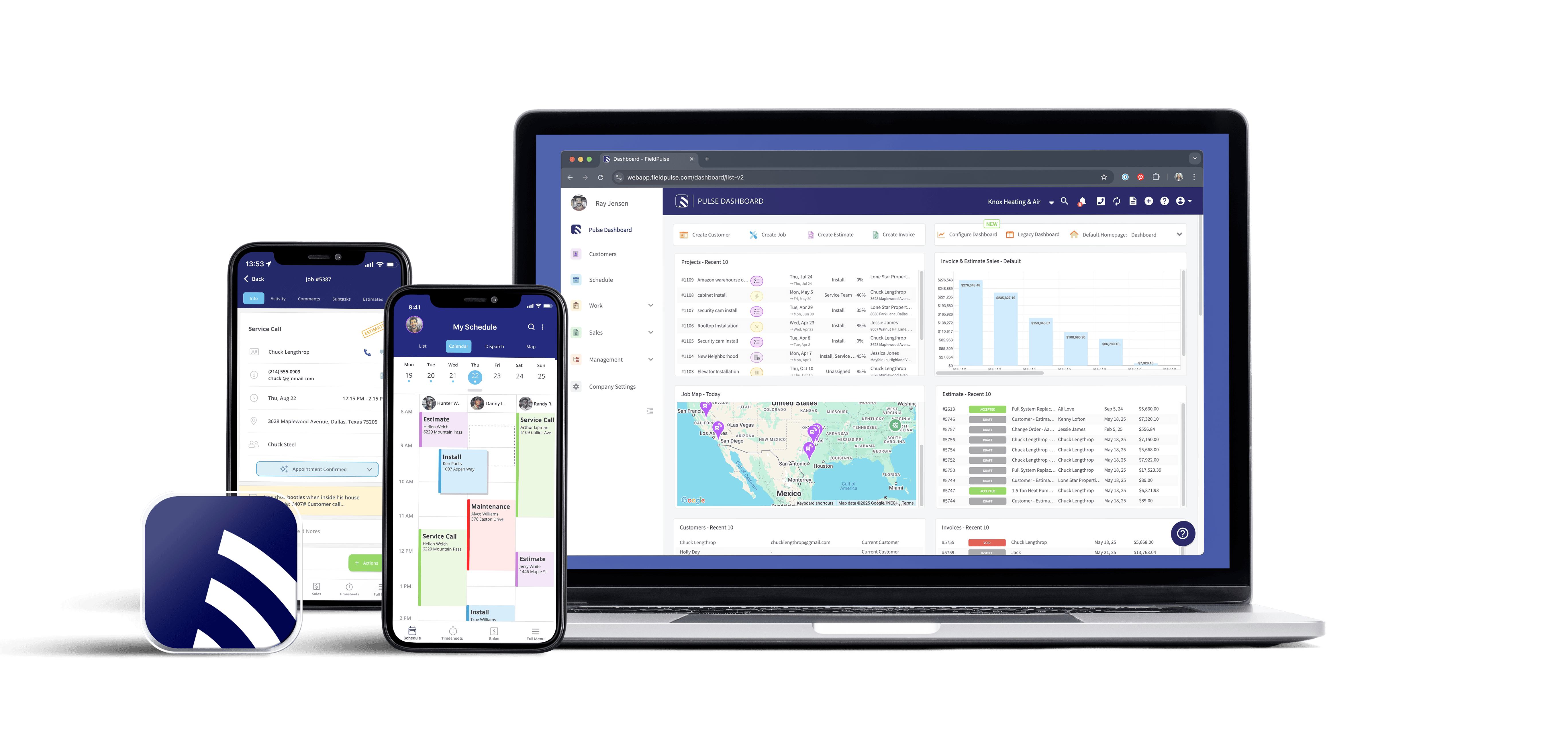
Field Service Management software can help you increase your plumbing business's profitability in any market. By streamlining scheduling, tracking job costs, simplifying invoicing and payments, managing customer relationships, and reducing administrative work, FieldPulse allows you to maximize your billable hourly rate and protect your profit margins. Furthermore, it enables you to make data-driven decisions while delivering exceptional customer service, helping your business operate efficiently and support long-term growth.
Streamline Scheduling to Maximize Billable Hours

Field Service Management software helps increase billable hours by streamlining scheduling , dispatching , and routing . This allows your team to spend more time on jobs and less time behind the wheel or administrative tasks. By reducing gaps in your schedule and improving routing efficiency, FieldPulse helps businesses complete more jobs each day without increasing labor costs.
Track Job Costs and Inventory for a Profitable Plumbing Business
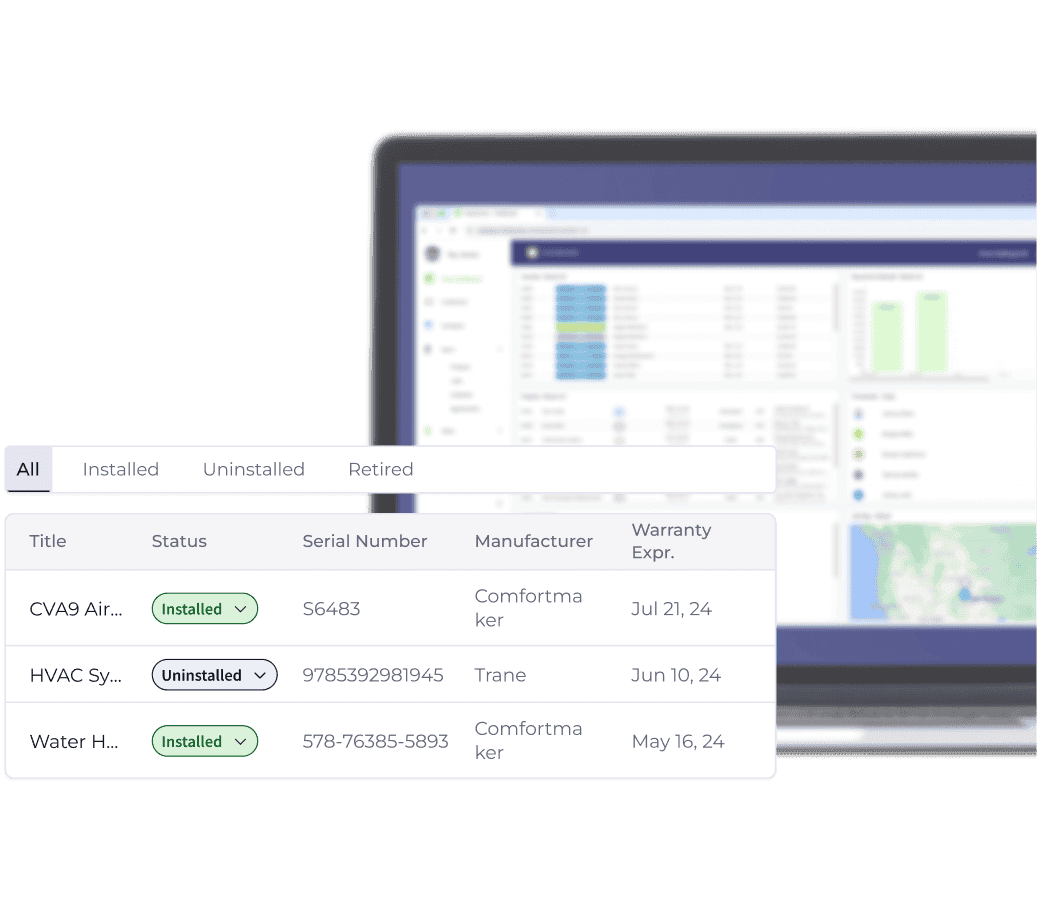
FSM software helps you increase your profit by giving you complete visibility into job costs and inventory . With FieldPulse's inventory management software, you can track materials, parts, and equipment in real time. By understanding exactly what materials are used on each job and their costs, plumbing business owners can protect profit margins, reduce waste, and make informed purchasing decisions that support business growth.
Use a Pricebook to Standardize Pricing and Protect Profit Margins
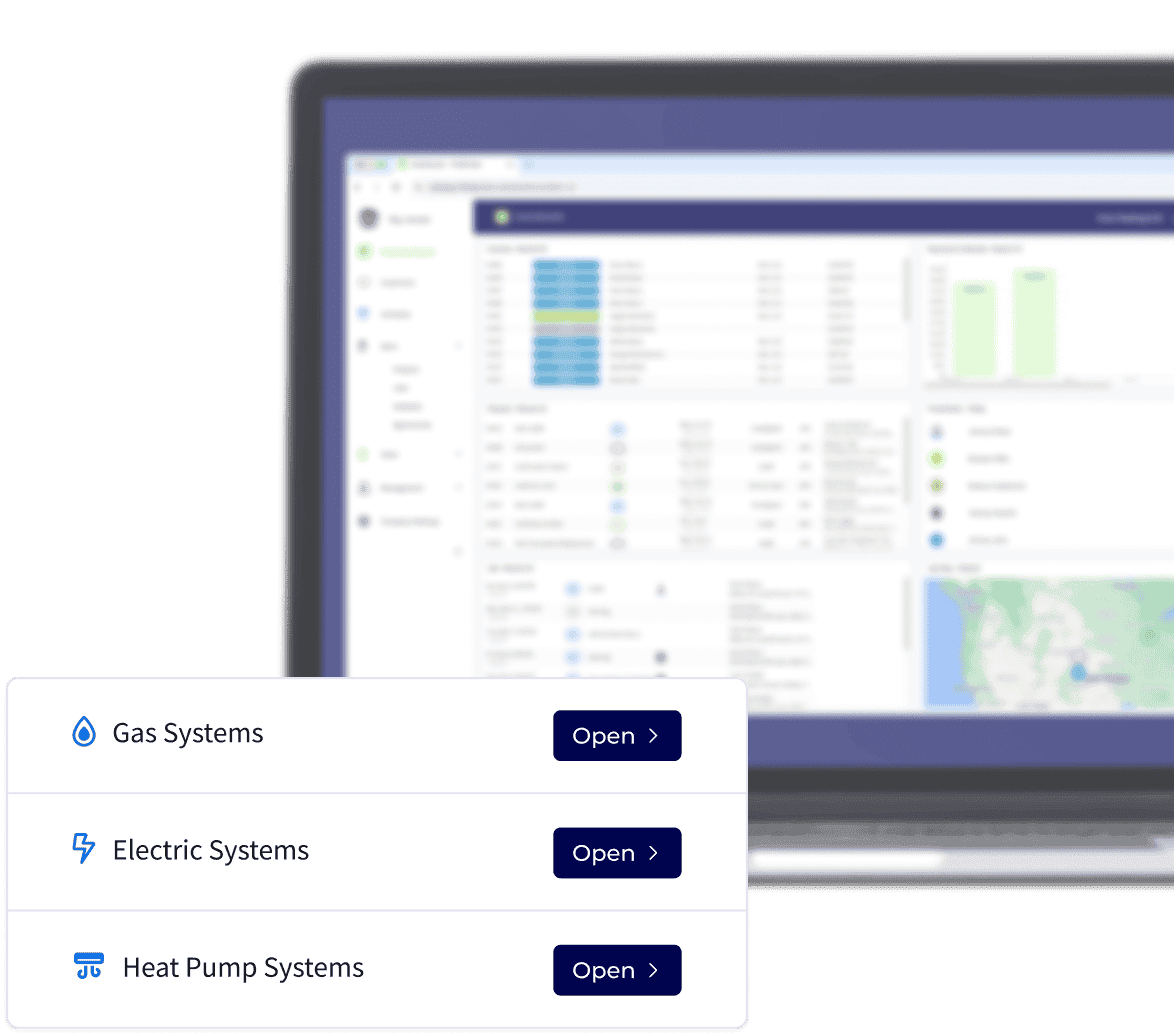
FieldPulse's Flat Rate Pricebook feature allows companies to manage pricing across services, labor, and materials to ensure accurate and consistent estimates for every job. By creating a digital, centralized price list, your company can simplify the estimating process, eliminate pricing errors, and protect your desired profit margins.
With real-time updates to your Pricebook, your employees can adjust to market changes while maintaining clear, professional pricing for customers. This consistency helps you avoid discrepancies and ensures each project contributes to your net profit while supporting your company’s financial goals.
Manage Customer Relationships with CRM

Utilizing a Field Service Management software’s CRM feature allows you to deliver better customer service by keeping all client information in a centralized hub. Faster, organized communication and personalized service help build trust, encouraging repeat business from existing customers while attracting new customers who expect reliable, high-quality service. This creates a strong, long-term customer base for your plumbing business.
In addition to using CRM tools, plumbing business owners can benefit from using digital marketing strategies . By implementing search engine optimization strategies and targeting local search terms, your business can appear higher in search results when new customers look for plumbing services in your area. Additionally, keeping active social media accounts can further support your business’s growth, allowing you to showcase your work, share customer reviews, and engage with your community. These methods will help you stay ahead of local competition while creating higher levels of brand awareness.
Gain Business Insights with Dashboards and Reporting
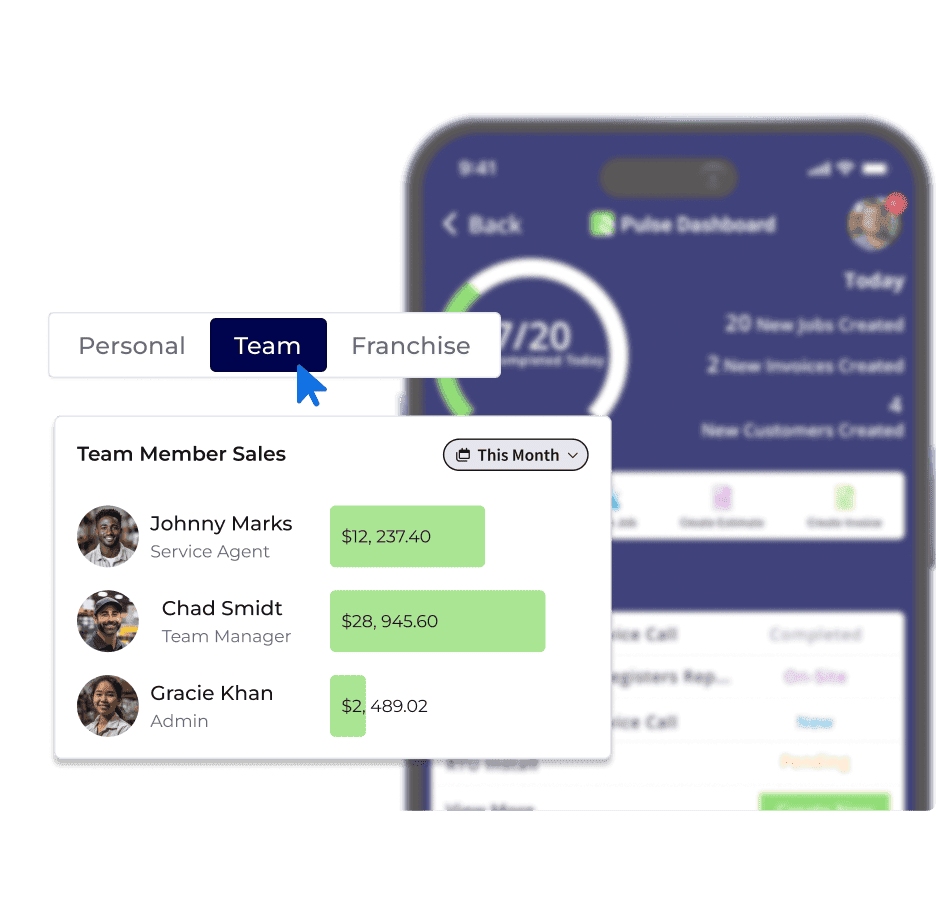
Data-driven decisions are key to running a profitable company. FieldPulse's Dashboards and Reporting software provides clear insights into your company’s revenue, job profitability, and expenses in one centralized hub. By monitoring metrics such as job costs, overhead expenses, and team productivity in real time, you can identify your most profitable services, address inefficiencies, and strategically plan for growth. These insights empower plumbing business owners to protect profit margins , track key metrics, improve employee performance, and maximize net profit.
Access Your Business Anywhere with Mobile FSM Tools
In the plumbing industry, being able to manage your business from the field is crucial for efficiency and customer satisfaction. FieldPulse’s mobile app gives technicians the ability to access schedules, customer information, job details, estimates, and invoices from any location. This level of flexibility helps reduce delays, improves communication between the office and field teams, and ensures your company can quickly respond to customer needs, helping you stay competitive and profitable in a fast-paced market.
Why FieldPulse is the Best Option for Your Plumbing Business
If you want to increase your business’s profitability while managing customers, jobs, and expenses effectively, FieldPulse is the best option. Designed for plumbing companies, FieldPulse helps you stay organized and operate efficiently in any market.
Plumbing businesses using FieldPulse have reported:
- 21.87% average increase in revenue
- 4.47 hours saved each week
- 77% increased productivity
- 23% increased profitability
- 50% increased customer satisfaction
FieldPulse is more than just software; it is your business partner, designed to boost your profitability and revenue. Regardless of the market you operate in, FieldPulse helps your plumbing business grow and thrive by giving you the tools to streamline operations, increase efficiency, and deliver exceptional customer service.
Ready to take your company to the next level? Request a demo with FieldPulse today to see how you can increase profits, simplify operations, and build a business prepared for long-term success.
